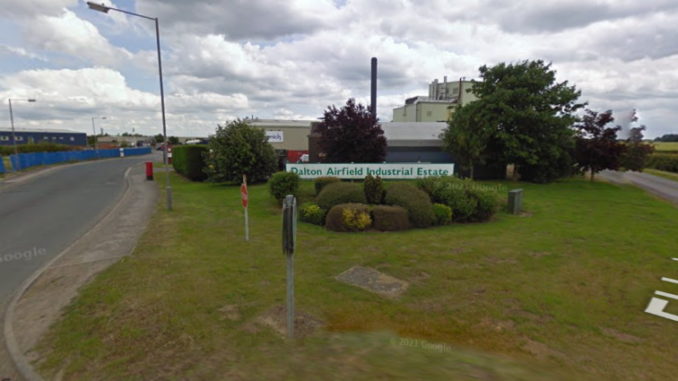
A major expansion of Dalton Airfield Industrial Estate has been approved despite concerns it could worsen traffic issues in nearby villages.
Hambleton District Council’s planning committee heard the proposal for development on an 18-hectare greenfield site on the former RAF Dalton airfield, south of Thirsk, would attract large-scale firms to Dalton Airfield Industrial Estate, which is already home to such firms as steel fabricators Severfield and pet food company Wagg.
Councillors were told the proposal had been well received in terms of the benefits it would bring to the local economy, with Thirsk and Malton MP Kevin Hollinrake, MP, describing it as “just the kind of development we need in North Yorkshire as we start to rebuild the economy post-Covid”.
The industrial estate has been marketed as among the most connected locations in North Yorkshire and a cost-effective alternative to other Yorkshire industrial hubs.
An agent for the developers told the meeting they wanted to create bespoke premises up to 18m high for large-scale occupier alongside buildings for small and medium size businesses.
Developers said the largest plot on the site extension would accommodate buildings with a combined internal area of 48,030sq m, the equivalent area to nine football pitches.
However, residents of the nearby villages of Asenby and Topcliffe told the meeting over the course of several months they had recorded more than 1,000 HGVs ignoring the 7.5-tonne weight restriction ban and the new development was highly likely to exacerbate the situation.
Councillors heard the situation with lorries taking the wrong route to the industrial estate along narrow roads was so severe that historic houses and structures in Topcliffe, which is known for its part in the Magna Carta, had been damaged and residents could struggle to cross the road.
Jamie Moores, chairman of Topcliffe Parish Council, said residents were concerned “it would make a traffic problem that is already bad worse” and the bridge over the River Swale was being “attacked” by HGVs despite the designated HGV exclusion zone.
He said: “Highways and trading standards have shown a complete failure to enforce the exclusion zone and therefore the law.”
Numerous councillors said it was vital routine independent monitoring of traffic before the estate extension opened, with the developers being made to pay for automatic number plate recognition cameras in Topcliffe and Asenby, so lorry drivers flouting the law could be identified.
Councillor Bridget Fortune said companies should be penalised for repeated incidents.
She said: “It is really important for people’s quality of life. If you balance that quality of life against business that quality of life comes first.”
However, the meeting was told the developers had agreed to fund measures to deter HGVs from travelling through the villages and that HGV routes would be specified and warning signs would be installed ahead of the estate extension opening.
Officers added the monitoring cameras had not been included in their traffic management measures because the developers “could not be made to pay for existing problems”.


Be the first to comment